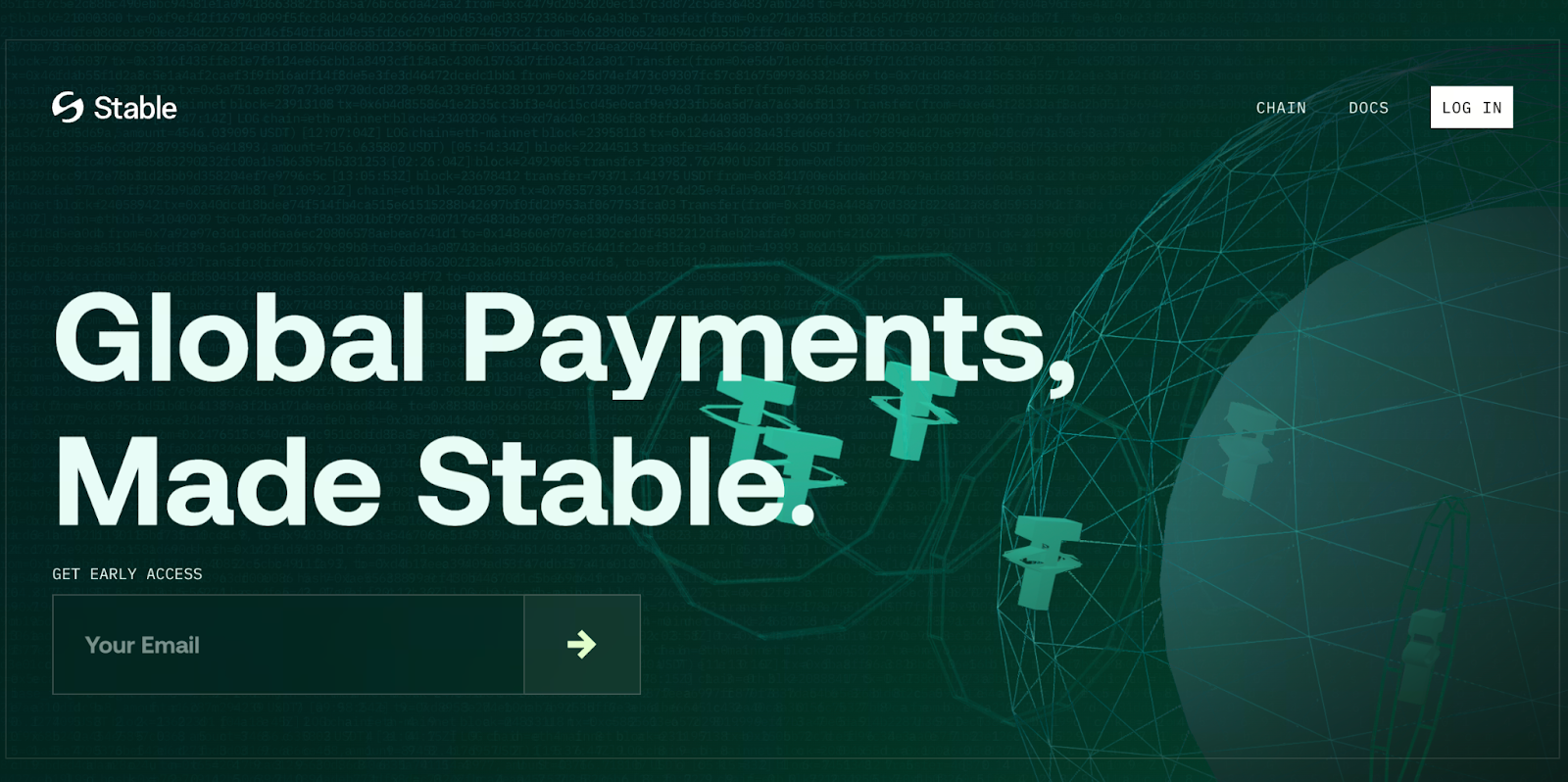Stable: Tether’s Secret Weapon? Unveiling the Logic Behind Bitfinex and Hack VC Leading a $28M Investment

Image: https://app.stable.xyz/
As stablecoins gain prominence in the crypto industry, new infrastructure opportunities are emerging. On July 31, 2025 (UTC), Stable announced a $28 million seed round led by Bitfinex and Hack VC, with substantial involvement from the Tether ecosystem. Stable is recognized as a “Tether subproject” and a dedicated stablecoin blockchain. It is attracting considerable attention. This article analyzes Stable’s rationale, value proposition, and future prospects.
Project Background: Why Stable?
Most stablecoins in circulation—such as USDT and USDC—operate on general-purpose blockchains like Ethereum, Tron, or Solana. These blockchains were not designed specifically for stablecoin transactions and frequently encounter the following limitations:
- High transaction costs: On Ethereum in particular, gas fees are volatile, undermining the user experience for small-value transactions.
- Slow confirmation times: Block production and finality can be sluggish, which is problematic for real-time payments.
- Cross-chain compatibility and bridging overhead: Bridging assets across chains introduces complexity and security risks.
Stable’s vision is to address these gaps—developing a blockchain purpose-built for stablecoin liquidity and payments, with USDT as the network’s native gas token to simplify transactions and reduce friction.
Funding Details: The Role of Bitfinex and Hack VC
Bitfinex and Hack VC co-led the funding round, joined by Franklin Templeton, Castle Island Ventures, KuCoin Ventures, Tether CEO Paolo Ardoino, and Braintree founder Bryan Johnson.
Bitfinex, a prominent crypto exchange with longstanding ties to Tether, serves as both an investor and an incubator for Stable. Hack VC, a pioneering Web3 investment firm, is making a strategic investment in stablecoin infrastructure.
Disclosures indicate that the funds will support R&D, infrastructure development, ecosystem incentives, and market expansion.
Technology and Positioning: Stable’s Core Attributes
Stable isn’t simply replicating other public blockchains; it’s purpose-built to enable large-scale stablecoin transfers. Its key features include:
- Native USDT for gas: On Stable, transaction fees are paid directly in USDT, eliminating the need for an additional token.
- High throughput and sub-second finality: The network supports parallel execution and targets sub-second transaction finality.
- EVM compatibility and interoperability: To facilitate migration from existing DeFi ecosystems, Stable supports EVM compatibility.
- Gasless transfers: In certain configurations, users can transact without needing to hold any gas token, lowering barriers to entry.
- Stable, backed by Tether and Bitfinex, enjoys advantages in liquidity, branding, and infrastructure.
This approach positions Stable as a leading “stablecoin-native chain,” clearly distinguishing it from multi-purpose blockchains.
Risks and Challenges: What to Watch
Innovation always carries risk. For Stable, several aspects warrant attention:
- Security and audit risks: As payment infrastructure, robust security is critical—any vulnerability could result in financial loss.
- Competitive market forces: Other stablecoin or payment-focused blockchains, such as Plasma, are also entering the field.
- Regulatory uncertainty: Stablecoins and their supporting infrastructure face regulatory scrutiny worldwide.
- Ecosystem adoption challenges: The project must encourage developers, merchants, and users to migrate, which involves bridging and migration costs and user inertia.
- Liquidity and user growth: Technical excellence alone is insufficient; without strong liquidity and user adoption, the chain’s true value will remain untapped.
Outlook: Future Ecosystem and Use Cases
Stable could power stablecoin payments, cross-border remittances, and contract settlements as core infrastructure. Key applications include:
- Cross-border micropayments
- Merchant payment settlement
- DeFi applications
- Fiat on-ramps and credit transfer bridges
If Stable succeeds in deployment, it could become an essential piece of infrastructure for the crypto sector—especially as stablecoins increasingly permeate real-world payment scenarios and unlock greater value.
Related Articles

Pi Coin Transaction Guide: How to Transfer to Gate.io

Flare Crypto Explained: What Is Flare Network and Why It Matters in 2025

How to Use a Crypto Whale Tracker: Top Tool Recommendation for 2025 to Follow Whale Moves

What is N2: An AI-Driven Layer 2 Solution

2025 BTC Price Prediction: BTC Trend Forecast Based on Technical and Macroeconomic Data
